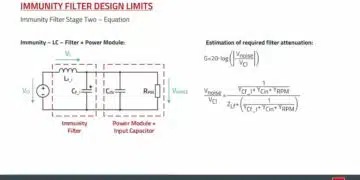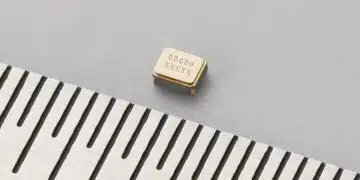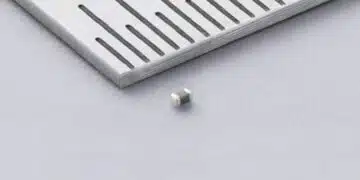The paper “How to Manage Leakage Current and Self Discharge of EDLC Capacitors” was presented by Gerald Tatschl, Vishay BCcomponents, Klagenfurt am Wörthersee, Austria at the 5th PCNS Passive Components Networking Symposium 9-12th September 2025, Seville, Spain as paper No. 6.3.
Introduction
Electric double-layer capacitors (EDLCs), also known as supercapacitors, have been in use for more than 50 years, offering a bridge between traditional aluminum electrolytic capacitors and rechargeable batteries.
Their extremely high capacitance is achieved through a combination of activated carbon with a large surface area, highly conductive liquid electrolytes, and the physical phenomenon of double layers. These devices deliver high discharge currents, making them useful in applications ranging from energy storage to backup power and energy harvesting systems.
Key Points
- EDLCs store energy through the double-layer effect, allowing rapid and reversible charge exchange.
- They can endure over one million charge and discharge cycles without significant degradation.
- Self-discharge and leakage current are critical factors affecting long-term energy retention.
- Both self-discharge and leakage current are highly influenced by temperature and charging history.
- Leakage current declines over time but increases with higher temperatures.
Extended Summary
EDLCs serve as effective energy storage solutions where rapid energy delivery and high peak currents are required. Their large capacitance comes from the separation of charges in an atomic-scale double layer within the porous activated carbon electrodes. This architecture allows the stored charge to be accessed quickly and repeatedly with minimal performance loss.
One of the primary considerations in EDLC design is self-discharge, which refers to the natural voltage decay that occurs once a charged capacitor is disconnected from its power source. This phenomenon is driven by residual leakage current and is sensitive to several factors, including the charging duration, the applied voltage, and the ambient temperature. A fully charged EDLC may retain its charge for weeks at room temperature, but this holding time decreases significantly at higher temperatures, sometimes dropping to hours. Moreover, the initial voltage drop is more prominent at higher charging voltages, and longer charging periods generally improve self-discharge performance.
Leakage current is another critical aspect of EDLC behavior, defined as the small, residual current that persists after a capacitor has stabilized at a constant voltage. This current is influenced by the internal structure and materials of the capacitor, including electrode properties, electrolyte composition, and aging effects. Leakage current is initially high but decays exponentially over time. It is typically specified at 72 hours and at room temperature, often in the microampere-per-farad range, decreasing to nanoampere levels after extended charging.
Temperature plays a dual role in EDLC performance. It accelerates both self-discharge and leakage current, effectively acting as a multiplier rather than resetting the current behavior. Even when the temperature cycles between high and low values, the leakage current returns to its previous state at the respective conditions within hours. This characteristic underscores the importance of thermal management in applications requiring long energy retention.
EDLCs are highly scalable and can be configured in series and parallel to meet various voltage and energy requirements. They are increasingly used in automotive systems, renewable energy applications, and critical backup solutions in medical and data storage sectors, where understanding and managing self-discharge and leakage current is essential for reliable performance.
Conclusion
Self-discharge and leakage current are key factors that define the long-term energy retention of EDLC supercapacitors. While both are influenced heavily by temperature and charging conditions, they are distinct phenomena that must be considered separately in system design. By optimizing charging strategies and managing thermal conditions, engineers can maximize the performance and reliability of EDLC-based energy storage systems.





























